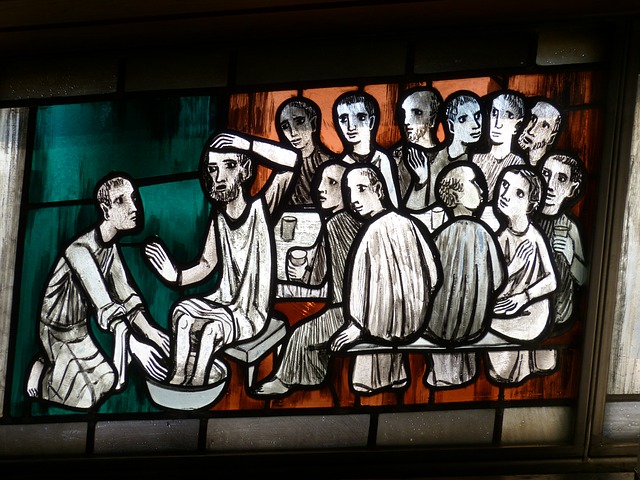
The Servant Leadership Style By Prem Kumar Devasahayam Lee
Steward The Servant Leadership Style
I have always struggled with the dominant leadership style, that seems to automatically be practiced by everyone. I am the leader or the head, and it is my vision, and I get things done. Where is the Servant Leadership style that Jesus taught?
The Vision as a driving force for all leaders is a given for leadership in today’s world. Hence a great amount of time and emphasis is spent in honing the vision to maximum clarity. Once the vision is clear, it is then used to motivate the team to work towards the objective we have. In this approach, the concept of Servant Leadership which Jesus taught tends to disappear, as we use a dominant leadership style to achieve our vision.
How does a Servant Leadership style fit into this vision driven model of leadership?
The Servant’s Vision
The vision of the servant Leader is not about what he wants to do, but about what the people need. It is not about himself or herself, but about the people he is meant to serve. It is not a vision which he has of achieving something, but a vision of service to the people.
This means that the vision arises out of a deep study of the needs of the people whom we are called to serve. It is not a self- examination of what I would like to do, or what expresses my talents and gifts, but about the needs of the people.
Vision Sharing or Creation?
People can only run when it is their vision, and not when it is someone else’s vision. I may understand the vision, and it may help give me a clear direction for the work I do, but the motivation to do the little extra which comes when it is my vision does not happen. Hence we do not communicate the vision but rather we create the vision in the team, so that the team has the same motivation that I have.
When we are creating the vision in the team members, we are taking the team members through the same process by which we arrived at the vision. We begin with the need, and not the vision that the need gave birth to. In most cases this is not done. We just inform the team of the vision, but not the reason for the vision. They have not seen the need for the vision, but have understood what you are trying to do. The knowledge is there, but the fire is missing.
If it is the team’s vision and not my vision, then the team’s input to the vision is to be there. While the vision statement may not change, the translation of the vision into action will have inputs from the team members. That means the mission or action statement of the team will change hues to some extent by the perspectives of the team members. That is true Servant Leadership, where the people are allowed to influence the vision and its implementation.
Vision Implementation
In implementing the vision, there will be continuous need to take decisions on a variety of issues, some major and some minor. The usual reflex action is to take the decision and to inform the team. That is the quickest and takes the minimum amount of your time. But that is not Servant Leadership, nor is it always the most efficient and time saving. While most minor decisions can be taken without discussion, the norm needs to be to discuss situations before taking decisions. This is a style set in the Bible in Amos 3:7 and an example of it is Genesis 18, when God says
“Shall I hide from Abraham what I am doing,…”
On sharing the information with Abraham immediately a discussion begins, and it is only when God and Abraham come to an agreement that God acts. If that is the pattern of Servant Leadership that God has shown us, can we be different.
My own experience has been that when we hand a decision down, the team members sabotage it and ensure that the decision does not work as they are against it. If I spend a little time in discussing it with the team, the commitment is high and implementation faster. So, in the long run, discussion always works better than a decision taken without discussion.
A Servant Vision
The problem with a Vision driven leadership is that it uses people to achieve the vision. When I use people to achieve a vision, am I being a servant leader?
So, I chose to see my organization as a training unit, where people will grow and fulfill their vision while working on our vision. People are more important than the vision, and we cannot be using people, we need to develop people.
So, I discuss with team members what is their dream for themselves, what they would like to learn and the skills they would like to acquire. Then I see how I can give them a sense of satisfaction in working for our vision for the people.
Seeing myself as a training institution, I had no problem when team members left for greener pastures. I told them, I am not dying in a hurry, and so if you need to get ahead, move on. Many leaders see team members departure as betrayal, I see it as growth for the team member, and interestingly, growth in my influence as I have a great friend in another organization and we can collaborate.
Conclusion
Servant Leadership needs to be my DNA and should permeate all aspects of my leadership style in all areas of my life. May God bless you as you implement these Biblical concepts in your life.
####
Prem Kumar Devasahayam Lee served over 20 years with the Haggai Institute teaching Christian Leadership and advancement. His present passion is teaching generosity as an essential response to the gospel.

Steward your leadership style!
Enroll in the Outcomes Academy Online Fall now through September 23, 2019.
Key leadership courses offered:
The module is designed to provide the leader of a nonprofit organization an executive-level view of what is required for God-honoring personal, organizational and board leadership. Creating a roadmap, this module lifts a leader to higher thinking about the role of executive leadership and how senior leaders influence others, the organization, the board and those the organization exists to serve. This module is required for all those participating in the CCNL program. (Three sessions in Leadership; two sessions in Board Governance)
Because we believe that successful leadership begins on the inside, this course is designed to intentionally focus on a leader’s heart motivation, our “why” first. Defining our “why” is not an easy task. It requires soul-searching, an understanding of one’s core life values and a desire for a destination that’s much more than pure profit or personal success. This course will explore critical questions every leader must answer, differences between a spiritually healthy and an unhealthy heart and how understanding and embracing our identity and an accurate self-awareness will make us much more effective influencers. This is a required course for an Outcomes Leadership CORE Certificate.

What is Christian Leadership Alliance?
Christian Leadership Alliance equips and unites leaders to transform the world for Christ. We are the leaders of Christ-centered organizations who are dedicated to faithful stewardship for greater kingdom impact.
Sign up for FREE blog updates.
Upcoming Events
Check back later!



